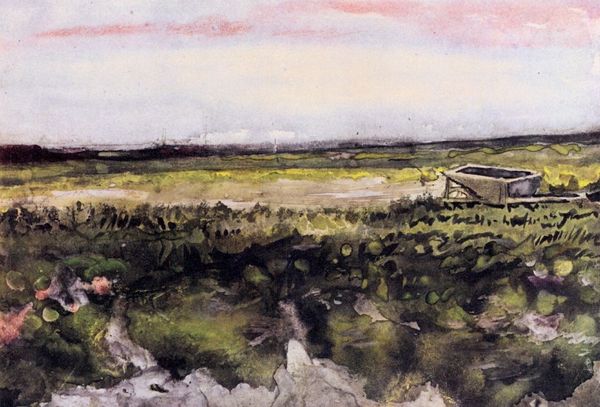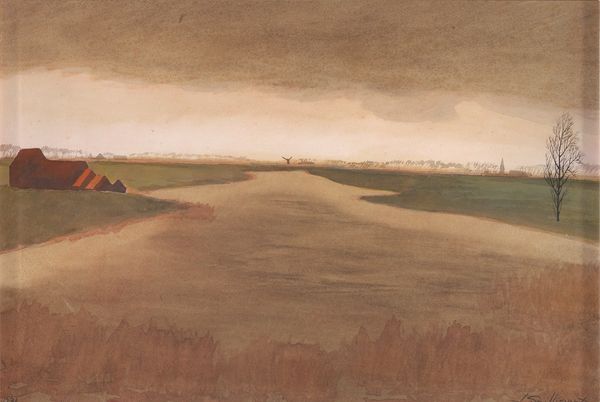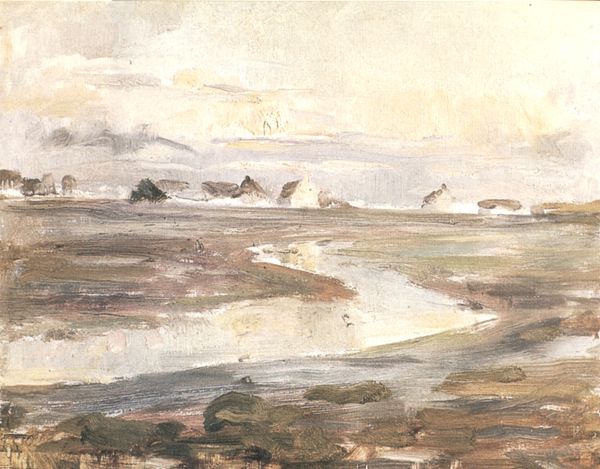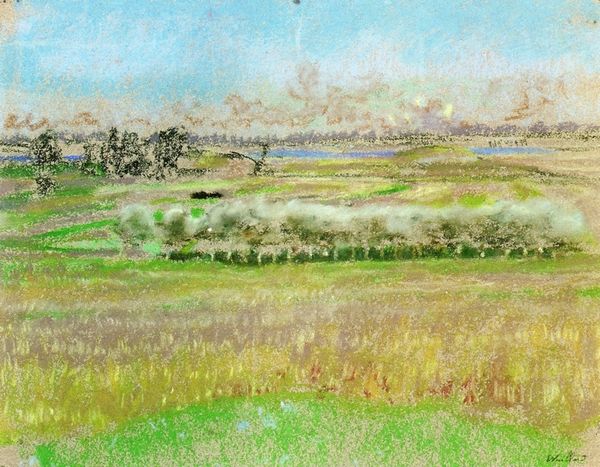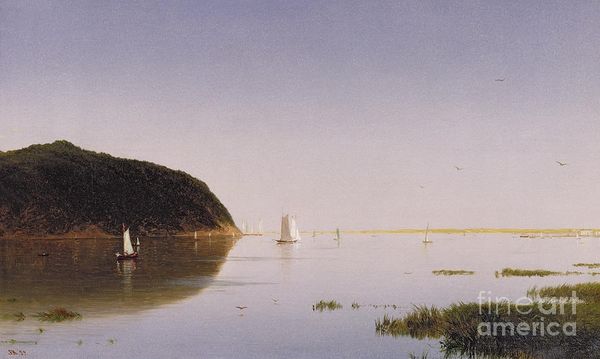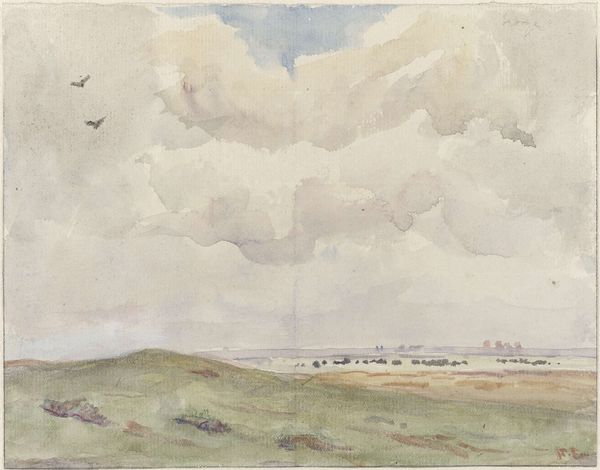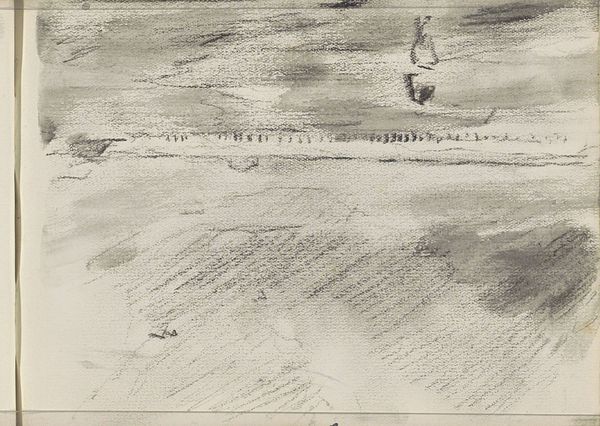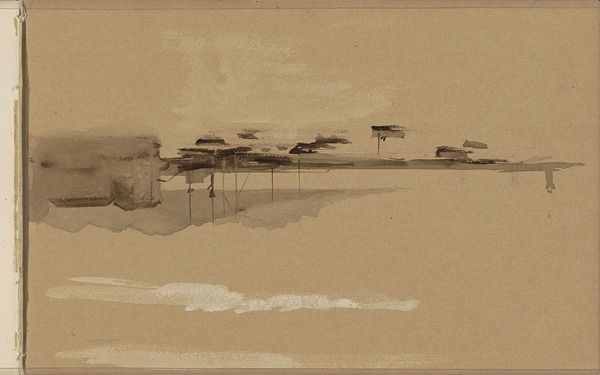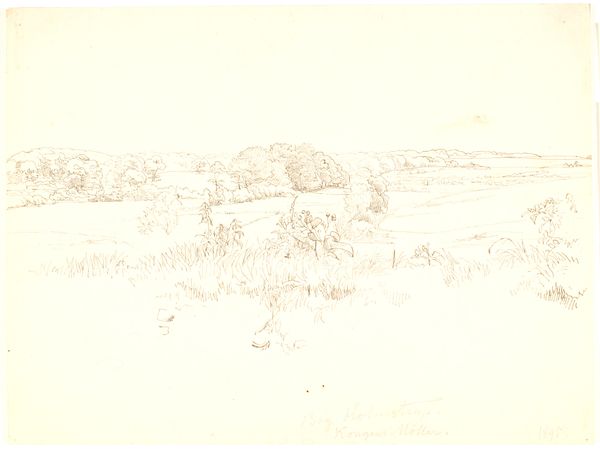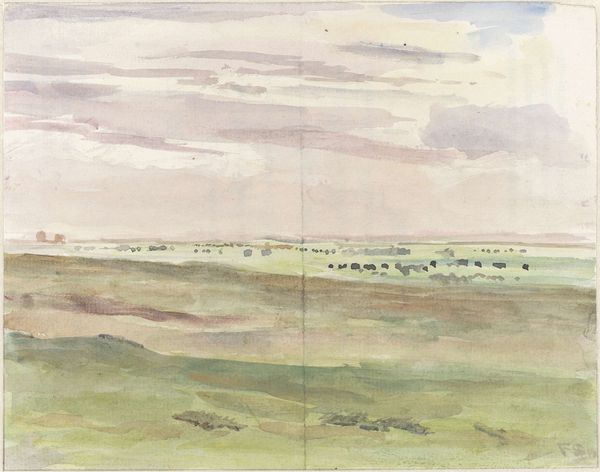
oil-paint
#
portrait
#
contemporary
#
oil-paint
#
landscape
#
figuration
#
oil painting
#
animal portrait
#
genre-painting
#
realism
Copyright: A.C.Fine Art Inc.
Editor: So, this is Alex Colville's "Waterville" from 2003, oil on board. There's this kind of detached stillness to the scene, even with the plane activity. It feels very staged, very deliberate. What do you see in this piece? Curator: The hyperrealism almost amplifies the uncanny. Colville's precision, coupled with the seemingly mundane subject matter—a man, a car, planes, a dog—becomes fertile ground for exploring themes of isolation and societal observation. The figure almost blends into the car; this may be a subtle, even subconscious allusion to identity formation based on status or machine. What assumptions can we draw about class and society? Editor: It's interesting you say "identity." I was more focused on the open-ended narrative. I mean, why is the man there? Where is he going? Is the dog waiting? It all seems very...symbolic. Curator: Absolutely. Colville often uses realism to explore interiority. The setting, the planes lined up, could symbolize the characters' and country's state of transition or perhaps anticipation. But, what kind of action? Think about the history of landscape painting; this isn’t simply a scenic view. What statements do you feel the painting makes? Editor: I guess the openness...it feels deliberately ambiguous, forcing the viewer to fill in the gaps with their own biases. Curator: Precisely. And in that space between what is seen and what is imagined, we find the potential for deeper understanding of ourselves, our places in contemporary life, and what society enables and suppresses. What resonated most with you? Editor: It's fascinating to consider art that captures the nuances of modernity, as this feels intensely...modern. Curator: Yes, it reminds us that even within realism, art can serve as a mirror, reflecting the multifaceted complexities of the world we inhabit.
Comments
No comments
Be the first to comment and join the conversation on the ultimate creative platform.
